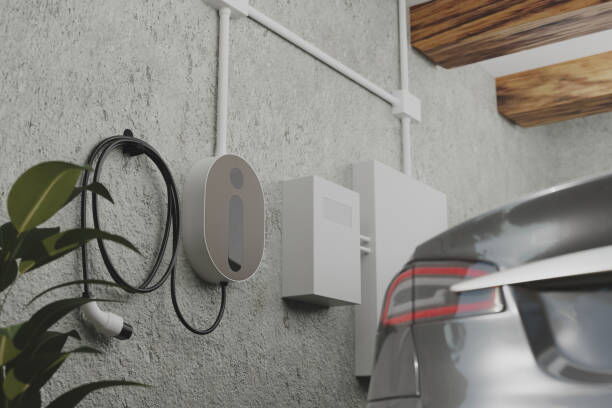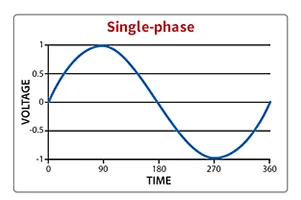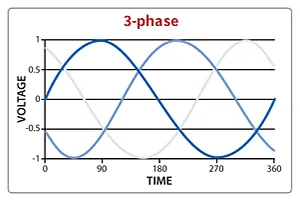As electric vehicles (EVs) become increasingly common on our roads, drivers are discovering that owning an EV involves a bit more than just plugging in and driving off. While you don’t need to be a professional electrician to own an electric car, it’s worth understanding the basics of how electricity flows from your home or a public charging station into your vehicle’s battery.
Just like the average driver of a gasoline car should know how to check their oil or tire pressure, an EV owner should have a grasp of the differences in charging speeds, the types of cables and plugs, and what makes one charging setup more efficient than another. A key part of this is understanding the difference between single-phase and three-phase power—and what that means for your EV charging cable.

All EVs, whether fully electric or plug-in hybrids, run on electricity stored in a battery. To recharge, that battery needs Direct Current (DC). However, most households and many public charging stations supply Alternating Current (AC). This means your vehicle’s onboard charger must convert AC to DC to store the energy in the battery.
The speed and efficiency of this process are influenced by several factors: the power supply (single-phase or three-phase), the capacity of the charger itself, the vehicle’s onboard charging capacity, the type and quality of the cable, and, of course, the capacity of the battery. Understanding how single-phase and three-phase systems differ will help you choose the right charging cable and know what to expect when plugging in.
Single-phase power is the simplest form of AC electricity distribution and is what you’ll find in most homes and light commercial buildings. In a single-phase system, the electrical current flows through two wires—a live (or hot) wire and a neutral wire—creating one sine wave of voltage that oscillates back and forth.
In much of the world, single-phase AC power runs at 50 Hz, meaning the current changes direction 50 times per second. In North America, it’s usually 60 Hz. While single-phase is ideal for running household appliances, lights, and consumer electronics, it has limitations when it comes to delivering the higher currents needed for fast EV charging.
In practical terms, when you plug your EV into a standard household socket, you’re almost certainly using single-phase power. This is why charging an EV on a standard socket (also known as “Level 1 charging”) can take a long time—often overnight or longer, depending on battery size.

Three-phase power, by contrast, is commonly used in commercial buildings, industrial settings, and public fast charging stations. This system uses three alternating currents, each phase offset by 120 degrees. Because the peaks and valleys of each phase are staggered, the overall power delivery is smoother and more consistent, minimizing dips and surges.
A three-phase supply typically consists of three live wires plus a neutral wire. The main advantage of this system is its ability to deliver more power efficiently over longer distances. This is why commercial buildings, factories, and public fast-charging networks rely on three-phase connections.
For EV owners, the benefit of a three-phase system is clear: faster charging times. When you connect your vehicle to a three-phase charger, it can charge up to three times faster than with a single-phase system, assuming your vehicle’s onboard charger can accept that level of input.

In the real world, the difference comes down to charging speed and convenience.
This is typical for home setups, especially in residential areas where single-phase power is standard. Many home wall boxes (Level 2 chargers) are designed for single-phase use, offering a significant speed boost compared to a standard socket but still not as fast as three-phase.
More common in commercial and industrial locations or high-power home setups in certain countries, three-phase connections enable much higher charging speeds. Public fast-charging stations often use three-phase AC or even supply DC directly to the vehicle, bypassing the onboard AC-to-DC converter entirely.
For example, charging a mid-sized EV battery (say, 60 kWh) from empty to full:
On a single-phase 3.7 kW home charger might take around 16 hours.
On a three-phase 11 kW charger, that time drops to roughly 5–6 hours.
A public DC fast charger (which skips the onboard converter) might deliver 50 kW or more, filling the same battery in about an hour or less.
The type of cable you use must match the available power supply and your car’s charging port. Cables are not just wires; they’re smartly designed with communication systems that ensure safe and efficient power transfer.
Modern EV charging cables are often “auto-switching,” meaning they can adapt to single-phase or three-phase supply where supported. This means if you have a high-quality three-phase cable, you can still safely use it at a single-phase charging point or with a vehicle that only supports single-phase charging. The reverse is also true: you can plug a single-phase cable into a three-phase charging point, but you’ll only get single-phase charging speeds.
For home use, some owners opt for a wall box charger that supports three-phase charging (where local infrastructure allows) to future-proof their setup, even if their current EV only supports single-phase. It’s all about compatibility and planning ahead.
To fully appreciate the single-phase vs. three-phase conversation, it helps to revisit AC and DC:
The standard form of electricity supplied to homes and businesses. In AC, the current reverses direction periodically. AC is easier to transmit over long distances, which is why it’s used for national power grids.
The form of electricity that EV batteries store and use. In DC, the current flows in one direction only. Batteries can’t store AC, so the car’s onboard charger must convert AC to DC before storing it.
Public DC fast chargers bypass the car’s onboard converter, delivering DC power straight to the battery. This is why they’re so much faster than standard AC chargers—there’s no conversion bottleneck, and the charger can supply much higher currents.
While DC fast charging sounds like an obvious choice for speed, it has its downsides:
DC fast chargers are expensive to install and maintain. They also require much higher power availability, which isn’t practical for every location.
Frequent high-speed DC charging can generate more heat and stress the battery over time, potentially reducing its lifespan. Many manufacturers recommend using DC fast charging only when necessary, such as on road trips.
It’s currently not feasible for most homes to have a DC fast charger due to infrastructure requirements and cost.
For these reasons, single-phase or three-phase AC charging remains the standard for regular home charging.
When deciding what charging solution works best for you, consider these factors:
Does your home or garage have single-phase or three-phase power available? In some countries, three-phase power is common in residential areas, while in others, single-phase is the norm.
Not all EVs can take advantage of three-phase AC charging. Some models, especially older or smaller ones, have onboard chargers limited to single-phase input. Check your car’s specifications.
If you mostly charge overnight, single-phase might be enough. If you have a larger battery or tight daily schedules that require faster charging, three-phase (if available) could be worthwhile.
Even if your current car can’t use three-phase charging, your next one might. Installing a three-phase capable wall box can save you hassle down the line if your local grid supports it.
Invest in a good quality, fully compliant charging cable. Auto-switching three-phase cables offer flexibility and convenience.
Single-phase and three-phase power are both vital parts of the EV charging landscape. Single-phase remains dominant for residential use and slower charging, while three-phase powers faster AC charging and supports growing demand for shorter top-up times. Combined with the ongoing expansion of DC fast charging networks, these systems provide EV drivers with the flexibility they need to keep their vehicles ready to go—whether they’re topping up overnight at home or grabbing a quick charge on a long road trip.
By understanding these basics, EV owners can make informed choices about their charging equipment, installation options, and everyday usage—helping them get the most out of their vehicle’s performance, battery health, and driving experience.
